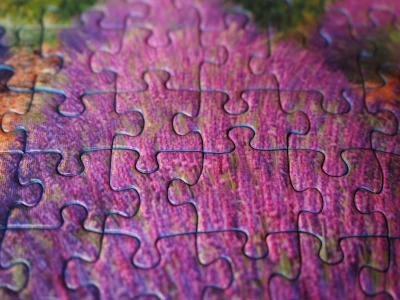Speed puzzling assembling is something every puzzle competitor discusses. The idea of how to get going as you first dump out the pieces on the table is how you set the tone for the experience. Most puzzlers will agree the easiest section first is a strategic and efficient speed puzzling tip that can contribute to a smoother overall puzzle-solving process.
Speed Puzzling Assembling: Get Started!

For me, the easiest point, being a color or pattern allows me to study the pieces and get into the puzzle. You don’t have time to think about it, so going for something that you know is familiar works well personally. There are other reasons to consider your speed puzzling assembling when you get started, but the most important reason is time so start with the easiest part of the jigsaw puzzle.
Table of Contents
Here’s why focusing on the easiest section can be beneficial:
Quick Progress Booster.
Starting with the easiest section allows you to make rapid progress. Assembling this section quickly boosts your confidence and sets a positive tone for the rest of the puzzle. The mental prep matters! Speed puzzling assembling is part movement, part confidence and once you get going, you can’t stop (until the end of course.)
Establishing a Foundation and Building.
Completing the simplest part of the puzzle first establishes a solid foundation. This foundation serves as a reference point for connecting more complex sections, helping you maintain a structured approach.
Reducing the Feeling of Being Overwhelm.
Tackling the easiest section initially reduces the initial feeling of overwhelm. It provides a manageable and less daunting starting point, making the overall puzzle-solving experience more approachable.
Familiarizing Yourself with Piece Shapes.
Assembling the easiest section allows you to familiarize yourself with the shapes and patterns of the puzzle pieces. This familiarity can be advantageous when transitioning to more intricate sections.
Building Momentum for the Next Section.
Achieving success in the simplest section builds momentum for the entire puzzle-solving process. The positive energy generated from quick success can motivate you to tackle more challenging parts with enthusiasm.
Strategic Time Management.
Starting with the easiest section enables you to strategically manage your time. It ensures that you allocate sufficient time for more complex areas while efficiently completing the straightforward portions.
Enhancing Pattern Recognition As You Play.
As you progress through the easiest section, your pattern recognition skills improve. This enhanced skill set becomes valuable when transitioning to sections with more intricate patterns and details.
Minimizing Frustration on Small Areas.
Focusing on the easiest section first minimizes frustration that may arise from struggling with challenging elements right from the beginning. It allows you to build a positive mindset before confronting tougher parts.
Team Collaboration Strategy Allows Everyone a Starting Point.
In team or collaborative speed puzzling, starting with the easiest section is an effective strategy. It allows team members to contribute quickly and partners to synchronize, setting the pace for coordinated efforts in more complex areas.
Strategic Piece Placement as You Move Forward.
Pieces from the easiest section can serve as strategic anchors when connecting to adjacent sections. This can facilitate smoother transitions and reduce the time spent searching for connecting pieces.
Speed Puzzle Assembling Matters
Incorporating the strategy of assembling the easiest section first into your speed puzzling approach can lead to a more efficient, structured, and successful overall experience. It provides a solid foundation for tackling the challenges of the puzzle with confidence and speed. This is one of the many speed puzzling tips I encourage people to incorporate into their game play.
You might be wondering if the nitty-gritty of speed puzzling assembling matters when it comes to technique. I promise you it’s a big deal. It’s the few minutes of getting started that you can’t take back. Finding your focus is a primary goal. For as long as I’ve been speed puzzling, I’ve taken the assembling starting to be a big deal because it is. You can’t move forward without a solid place to start.
